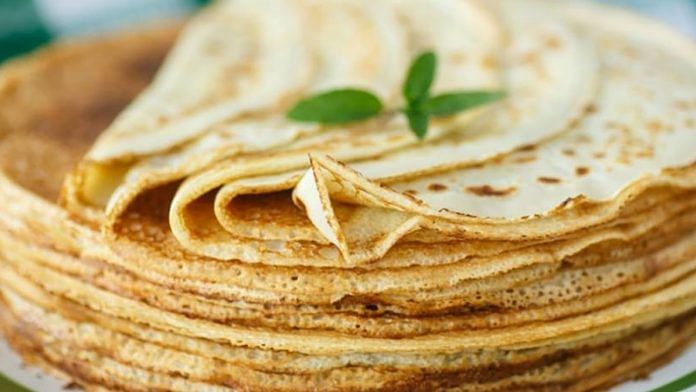New Delhi: It’s a four-year-old conundrum.
Are rotis and Malabar parottas distinctly different food items? What about papads and fryums? Or idli-dosa batter mix in powder form versus liquid form, even though all of these end up on our plates and make for a good meal?
These are questions that have dogged manufacturers, retailers and consumers alike ever since India rolled out the goods and services tax (GST) in July 2017, the reason being these and many other items were taxed at varying rates despite their strong likeness.
The different tax slabs under the GST, initially envisaged as a clean simple tax system, has led to varying interpretations with companies constantly trying to classify their products under lower tax slabs and the tax authorities countering such claims asking for the products to be taxed at higher rates.
This has meant that GST has seen a fair share of disputes in the first four years of its implementation.
According to data available with the Ministry of Finance, as of 1 March 2021, there were over 4,600 such disputes pending in different courts.
Tax experts and lawyers point out that this is likely to continue unless the GST Council — the federal decision-making body comprising the Union finance minister and state finance ministers — decides to reduce the number of tax slabs from the current six slabs — 0 per cent, 5 per cent, 12 per cent, 18 per cent, 28 per cent and 28 per cent plus cess.
“Classification disputes have arisen in the GST regime due to the multiple rates and exemptions that exist,” said M.S. Mani, Partner, Deloitte in India. He pointed out that businesses would prefer being in the exempted/lower tax slabs as GST is an indirect tax that is added to the price of the product.
“Since product innovation will continue to outstrip changes in tax categorisation/tax rates etc, it is essential to establish a framework for quick resolution of any potential anomalies, without disrupting businesses in any manner and avoid litigation as much as possible. The next few years will see a gradual reduction of the GST slabs and more clarity on existing products, hence classification disputes should come down over a period of time,” he added.
Also read: GST revenue crosses Rs 1 lakh crore for second month in a row in August
Difficult to classify?
The rationalisation of GST rates has been on cards for the last few months, with a proposal to merge at least the 12 per cent and 18 per cent tax slabs into one rate. However, the proposal is yet to be taken up and cleared by the GST Council.
“The GST rates are levied on goods based on their HSN classification (six-digit uniform code) that are used by all countries. But there are so many products with varying characteristics that it becomes difficult to classify all of them and determine which rate will be levied,” said Tanushree Roy, Director, Indirect Tax, Nangia Anderson LLP.
“Assesses try to take advantage of the differing rates by classifying their products under the lower rates. Similarly, the revenue department has its own interpretations about which item can be taxed at what rate,” said Roy.
And it is not surprising that the rates vary based on how various courts have interpreted the different products on offer. For instance, a 5 per cent GST is levied on idli-dosa mix liquid batter but a 18 per cent GST on a idli-dosa dry powder mix even though the final product is the same.
Clarity still eludes on whether fryums should attract a higher GST of 18 per cent or be exempt from tax like papads.
Earlier this week, the Central Board of Indirect Taxes and Customs was forced to clarify that papads, irrespective of their shape, are exempt from GST.
Papad, by whatever name known, is exempt from GST vide Entry No. 96 of GST notification No.2/2017-CT(R). This entry does not distinguish based on the shape of papad. This notification is available at https://t.co/ckIfjzg8hw https://t.co/19GbQJvYZe
— CBIC (@cbic_india) August 31, 2021
There is similar confusion over taxation rates for items like Malabar parotta, flavoured milk and popcorn as well.
“The objective of GST was to reduce classification disputes for products, which have blurred lines for distinction. That can be reduced only by merging rates and products,” said Abhishek Rastogi, Partner with Khaitan and Co, a law firm.
Roy pointed out that GST levy on services also faces classification problems.
“For instance, the GST rate on leasing and renting leads to a lot of confusion. But this will be a continuing issue because it is not practically feasible to provide a comprehensive list of all items with their tax rates,” she said.
(Edited by Amit Upadhyaya)
Also read: For Modi govt, ‘GDP rise’ means increase in gas, diesel and petrol prices: Rahul Gandhi






